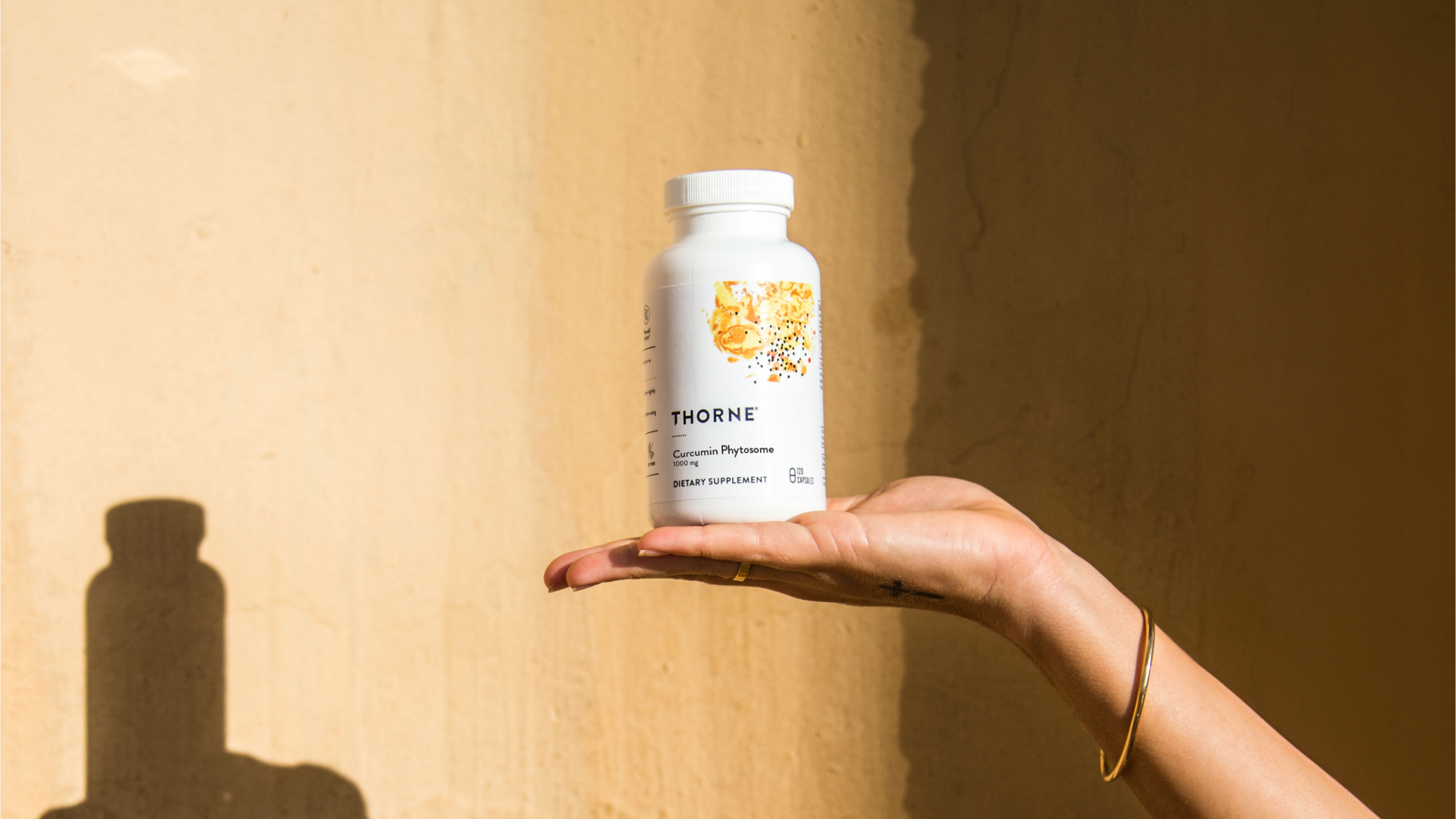People take supplements to improve or optimize their health. So what happens when you look at the label, and the ingredient list is filled with unrecognizable additives?

In an ideal world, we would all eat a perfectly nutritious diet, consuming all the nutrients we need from our food. Yet in reality we live in a fast-paced, overly busy, stressed society that makes getting adequate nutrition difficult. In addition, modern farming and food production practices – along with environmental challenges – can negatively impact the nutritional makeup of foods. So, while we might be eating more calories daily than our ancestors did, the micronutrient makeup of those foods is not equal.
Enter multi-vitamins.
Multi-vitamin/mineral supplements can bridge nutritional gaps in a modern diet by providing essential nutrients individuals have difficulty consuming in adequate amounts from food alone. And for those who have additional nutritional challenges – chronic illness, medications that can deplete nutrients, decreased digestion and absorption with age, food insecurity – a multi-vitamin/mineral supplement can be an integral part of maintaining health and wellness.
With so many nutrients – and a label full of numbers – knowing what to look for in a multi-vitamin can be a challenge all on its own. And what do all those nutrients do in the body anyway?
To better understand the anatomy of a multi-vitamin, let’s dissect some of the ingredients commonly found in a multivitamin formula and the role each nutrient plays in overall health.
Vitamin A
Do you know why you never see rabbits wearing glasses? Because they eat all their carrots!
Whether or not rabbits have perfect eyesight, it is true that carrots are packed with beta-carotene, an antioxidant the body converts to vitamin A, which is important for eye health.
Like many vitamins, the term “vitamin A” is a generic name for a collection of compounds found in animal and plant foods that are converted to active forms – retinol, retinal, and retinoic acid – in the body. Some individuals have genetic variations that make their bodies less efficient at converting the plant forms – carotenoids – to the active forms. In addition, because retinol has a high potential for toxicity, multi-vitamins commonly include a mixture of both beta-carotene and retin- forms (like retinyl palmitate).
In addition to eyesight, vitamin A plays an important role in skin health, a reason it is often found in topical beauty products. In the immune system, vitamin A is needed for white blood cell differentiation, migration, and antigen-presenting actions. Red blood cell production, bone health, and thyroid function also require vitamin A.
A note about the carotenoid lutein: Although lutein is a carotenoid that also benefits eye health, it is not converted to vitamin A by the body like beta-carotene. Lutein is the most abundant pigment in the macula, an area in the back of the eye that helps you see directly in front of you.
Vitamin D
Often called “the sunshine vitamin,” vitamin D is unique in that the body makes it from sunlight, but limitations in sun exposure have led to widespread vitamin D insufficiency. It’s estimated that 50% of the population worldwide has vitamin D insufficiency, in this, 1 in 3 children in New Zealand. Many foods, like orange juice, milk, and cereals, are fortified with vitamin D for this reason. Some food sources with naturally occurring vitamin D include fatty fish, algae, beef, chicken, egg yolks and mushrooms.
Vitamin D is another fat-soluble vitamin, like vitamin A, that provides important nutrition for immune cells. It is necessary for white blood cells to differentiate into their specialised functional types, helps bring immune cells to the site of infection, and modulates the immune system – ramps up function when demand is high and calms the response when the work is done. Vitamin D can be found from head to toe because it is an important nutrient for healthy muscles, bones, teeth, skin, heart and brain function, and eyesight.
Vitamin E
A lesser talked about fat-soluble vitamin, vitamin E is an antioxidant that occurs naturally in eight different forms. The body’s preferred form, alpha-tocopherol, is found primarily in nuts and seeds, especially sunflower seeds, almonds, and hazelnuts. Tomatoes, apricots, cranberries, and avocados are good sources as well.
Immune cells also use vitamin E to function properly, especially in their antioxidant activities. Vitamin E helps limit oxidative stress from causing free radical damage, which protects cell membranes. It is also important for healthy neurological function and provides benefit to the heart and lungs.
Vitamin K
Another fat-soluble vitamin, vitamin K has two main naturally occurring forms: K1 (phylloquinone) and K2 (menaquinones or MKs). Unlike other fat-soluble vitamins, K1 and K2 have no known levels of toxicity, although vitamin K can interfere with certain medications. Food sources of vitamin K include green, leafy vegetables, such as kale and spinach; cruciferous vegetables; and plant oils.
Vitamin K is well-known for its role in blood clotting, and infants are often given a vitamin K shot shortly after birth to help their red blood cells function and decrease the risk of excessive bleeding. Outside of its role in blood clotting, vitamin K is necessary for healthy arteries, helps direct calcium into bones and supports immune function.
Vitamin C
A powerhouse antioxidant vitamin, ascorbic acid (vitamin C) is the water-soluble vitamin you know and love from oranges. Many think of citrus fruits as the main source of vitamin C – maybe because of the use of lemons and limes by the British Navy to prevent scurvy (caused by a vitamin C deficiency) among sailors – but other fruits and vegetables are just as good for getting your daily dose of vitamin C. Cruciferous veggies (like broccoli, Brussels sprouts and kale), kiwi fruit, guava, strawberries and sweet red peppers are all excellent sources as well.
In the immune system, vitamin C stimulates both the production and function of white blood cells. It also recycles glutathione, the body’s master antioxidant and an important immune system compound. Beyond the immune system, vitamin C is necessary for connective tissue and collagen formation, making it an important nutrient for wound healing as well as formation of healthy gums, teeth, skin and bones.
B-Complex Vitamins
Eight water-soluble vitamins make up the group known as the “B complex.” Each B-complex vitamin has a unique name and most have multiple forms. Animal proteins, such as fish, seafood, meats, dairy, and eggs, are good sources of most B vitamins, in particular vitamin B12, which has few plant-based sources. Leafy greens, legumes, fortified cereals, seeds and nuts also provide many B-complex vitamins.
Thiamine, thiamine pyrophosphate, and benfotiamine are unique names for vitamin B1. This important nutrient supports the heart and nervous system and plays a role in the function of several enzymes that metabolise carbohydrates and branched-chain amino acids. Lack of sufficient dietary intake, chronic alcohol consumption, and malabsorption are the most common risk factors for vitamin B1 deficiency.
Vitamin B2 is known as riboflavin, and its active form is riboflavin 5’-phophate (R5P). The bright yellow colour of vitamins, and subsequently urine after consumption of B vitamins, can be attributed mainly to riboflavin, although folate and vitamin B12 can colour urine as well. Riboflavin benefits white and red blood cells, is necessary for healthy thyroid function, supports cellular energy production and is required for many metabolic pathways, including methylation.
A vitamin with many vitamer names, vitamin B3 is converted to NAD+, a compound necessary for cellular energy production. Sometimes collectively called niacin, the B3 vitamin group includes nicotinic acid, nicotinamide, nicotinamide riboside (NR) and nicotinamide mononucleotide (NMN). Vitamin B3 is also important for the skin, nervous system and digestive tract.
Vitamin B5 – pantothenic acid or the active form pantethine – is needed for production of coenzyme A, an enzyme used for carbohydrate, protein and fatty acid metabolism. Vitamin B5 also supports cellular energy production, healthy adrenal function and a healthy cortisol response to stress.
Pyridoxine and the active form pyridoxal 5’-phospate are vitamin B6. A nutrient needed throughout the body, vitamin B6 plays a role in the formation of red blood cells and the myelin sheath that surrounds nerve cells. It is also necessary for many metabolic processes, including the production of hormones, neurotransmitters, and cellular energy as well as in the methylation cycle.
Commonly called biotin rather than vitamin B7, this nutrient often gains mention for its role in the healthy growth of fingernails, skin, hair and nerve cells. In addition, biotin supports glucose metabolism in the pancreas and liver.
Vitamin B9 is another B vitamin commonly known by its form names – folate, folic acid, folinic acid and its active form 5-methyltetrahydrofolate (5-MTHF). Folate plays a role in development of the foetal brain and spinal cord. Along with its roles in the nervous system and red blood cell formation, folate is the most important vitamin in the methylation cycle.
The final B-complex vitamin is cobalamin or vitamin B12 (methylcobalamin and adenosylcobalamin are the active forms). Like folate, vitamin B12 is necessary for nervous system function, red blood cell formation and methylation. In addition, both energy production and sleep (circadian rhythms) require vitamin B12.
Minerals
Often formulas will also contain a variety of essential minerals in their well-absorbed forms. Fruit, vegetables, nuts, cereals, fish, meat and dairy are all food sources of minerals. However, while plants are excellent sources of minerals, they can also contain “anti-nutrients” like phytic acid that can limit the absorption of certain minerals. Eating a variety of mineral-containing foods helps ensure proper nutrition.
The function of some of these minerals include:
- Calcium – one of the main components of bones and teeth, regulates nerve transmission, is necessary for muscle contraction and maintains the acid-base balance in the body.
- Iodine – a major component of thyroid hormones, plays a role in metabolic rate, body temperature, growth and development and healthy breast tissue.
- Magnesium – necessary for hundreds of metabolic reactions in the body, regulates nerve transmission, plays a role in muscle contraction and is a component of bones and teeth.
- Zinc – necessary for connective tissue formation and normal immune function, plays a role in reproductive health and helps red blood cells carry oxygen.
- Selenium – provides antioxidant support, supports immune function and is necessary for the production of thyroid hormones.
- Copper – supports bone, blood vessel, heart, nerve and skin health.
- Manganese – provides antioxidant support to the immune system, plays a role in bone development and assists in metabolism of glucose and amino acids.
- Chromium – assists insulin in regulating blood sugar.
- Boron – is important for bone development and repair.
Although a multi-vitamin/mineral supplement has many benefits, it’s important to remember that it isn’t a replacement for good nutrition. Instead, think of it as a helper, a supplement to ensure your body’s daily nutrient needs are met.
Share:
Related Posts

Thorne Celebrates 40 Years of Good Health
Maggie Chandler April 12, 2024 As it’s often said at Thorne, healthy ageing is a gift. It’s about embracing the way you feel, your experiences,

Healthy Coffee Alternatives: When to Quit Coffee & What to Drink Instead
Dr Thomas Wnorowski February 16, 2024 Key Points: Does the idea of quitting coffee make you feel all sorts of (terrible) things? It’s common. But

How Your Social Network Impacts Your Mental Health
Austin Ruff April 17, 2024 Humans are inherently social creatures. It’s in our nature to connect and want to be connected to the people around

Microbiota-Gut-Brain Axis: Behaviour and Dementia Implications
People take supplements to improve or optimize their health. So what happens when you look at the label, and the ingredient list is filled with

Gut Bacteria and GABA
People take supplements to improve or optimize their health. So what happens when you look at the label, and the ingredient list is filled with


